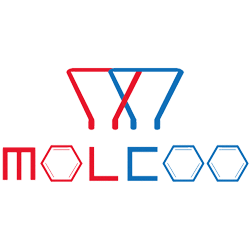Product Number: A109012
English Name: Aprocitentan Impurity 12
English Alias: 5-(3-bromophenyl)-4,6-dichloropyrimidine
CAS Number: 1532412-37-5
Molecular Formula: C₁₀H₅BrCl₂N₂
Molecular Weight: 303.97
Product Advantages:
Ultra-high purity assurance:HPLC purity ≥99.5%, with structure confirmed by multiple methods including 1H NMR, 13C NMR, and HRMS (high-resolution mass spectrometry), meeting the stringent requirements of global regulatory agencies such as FDA and EMA for impurity reference standards.
Extreme condition stability:Stable for 36 months when stored at -20°C in the dark, and with a degradation rate <1% after heating at 60°C for 72 hours in solution (e.g., acetonitrile), suitable for long-term storage and high-temperature accelerated testing.
Precise process traceability:As a characteristic by-product of aryl halogenation reactions in aprocitentan synthesis, it specifically tracks the risk of polyhalogenated impurities caused by excessive brominated/chlorinated reagents, assisting in identifying process parameters.
Applications:
Full lifecycle pharmaceutical quality control:Used for LC-MS/MS detection of this impurity in aprocitentan APIs, formulations, and stability samples, controlling its content ≤0.05% in accordance with ICH Q3B standards to ensure compliance with genotoxic impurity (GTIs) control requirements.
Complex process optimization:In polyhalogenation reactions of pyrimidine rings, monitoring impurity content (e.g., reducing impurity from 1.2% to 0.1% when the molar ratio of bromobenzene to chloropyrimidine is adjusted from 1:1.5 to 1:1.1) optimizes the ratio and feeding order of arylating reagents to reduce by-product formation.
Analytical method validation:Serves as a reference material for developing specific detection methods, such as sensitivity verification of ultra-performance liquid chromatography-tandem mass spectrometry (UPLC-MS/MS), with a limit of quantitation (LOQ) as low as 0.01μg/mL for trace impurity detection.
Toxicological risk assessment:Provides high-purity samples for GLP laboratories to support in vitro gene mutation tests (e.g., Ames test) and in vivo micronucleus tests, facilitating the establishment of safe exposure limits for impurities.
Background Description:
Aprocitentan Impurity 12 is a trihalogenated heterocyclic impurity introduced during aprocitentan synthesis due to excessive reaction between aryl bromides and chloropyrimidines. The polyhalogen atoms (bromine, chlorine) in its structure exhibit strong electrophilicity, potentially causing alkylation reactions with DNA and posing a potential genotoxic risk. According to the ICH M7(R1) guideline, such impurities with polyhalogenated aromatic structures require strict mutagenicity screening, making their residual control a core aspect of process development and quality research. Currently, the industry generally sets the individual impurity limit at ≤0.05% with reference to ICH Q3A.
Research Status:
Cutting-edge detection technology:UPLC-MS/MS is employed using a C18 ultra-hydrophobic column (1.7μm, 2.1×100mm) with 0.1% formic acid aqueous solution-acetonitrile (gradient elution) as the mobile phase, combined with multiple reaction monitoring (MRM) mode, achieving a detection limit (LOD) as low as 0.005ppm for precise quantification of nanogram-level impurities.
Formation mechanism analysis:Studies show that impurity formation is positively correlated with the feeding rate of aryl bromides and reaction temperature. When the bromobenzene dropping rate exceeds 5mL/min or the reaction temperature exceeds 80°C, impurity formation increases by more than 3 times; slow dropping at low temperature (≤25°C) and introducing catalytic copper powder (0.5mol%) can reduce impurity formation by over 90%.
Safety evaluation progress:A 13-week subchronic toxicity test in rats showed no obvious toxic target organs at doses ≤20mg/kg, but an in vitro comet assay revealed a 1.8-fold increase in DNA damage index at high concentrations (≥50μg/mL), suggesting that the limit should be set at ≤0.03% based on toxicological data to ensure drug safety.

 China
China









